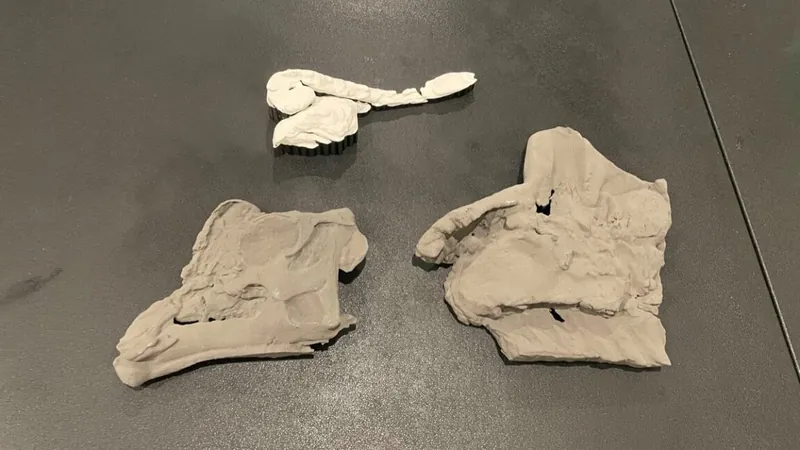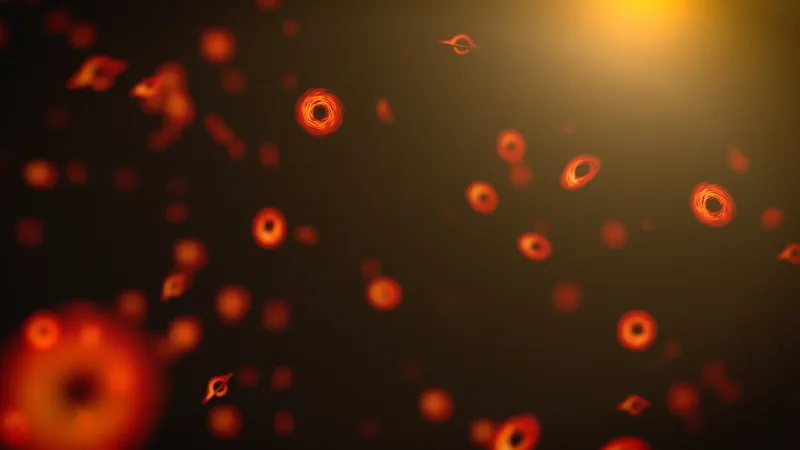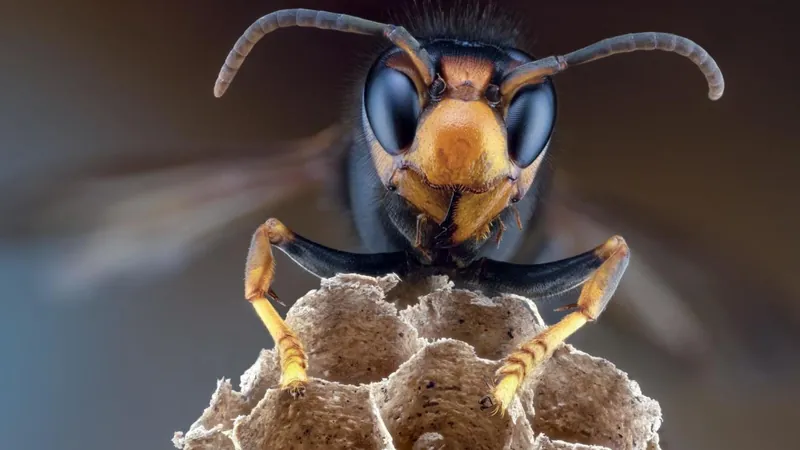
Unlocking the Mysterious Sounds of Parasaurolophus: A Journey Through Time
2024-11-21
Author: Rajesh
The iconic duck-billed dinosaur, Parasaurolophus, is renowned for its striking crest, which some experts believe acted like a resonating chamber capable of producing low-frequency sounds. While the true vocalization of Parasaurolophus remains a mystery, research led by Hongjun Lin from New York University is shedding new light on this prehistoric enigma. During a recent virtual gathering of the Acoustical Society of America, Lin shared his groundbreaking approach to modeling the dinosaur's crest and its acoustic properties.
Inspired by the imaginative sounds in the Jurassic Park film franchise, which blended modern animal calls—from baby whales to crocodilian cries—Lin's fascination with dinosaurs started in childhood. “I spent countless hours reading, watching, and fantasizing about what life would look like if dinosaurs roamed the Earth today,” he revealed during a press briefing. It wasn't until his college years that he recognized how fabricated these cinematic dinosaur sounds were, which spurred him to investigate what real dinosaurs actually sounded like.
Fossils of Parasaurolophus date back to the early 20th century, with the first skull and partial skeleton unearthed along Alberta’s Red Deer River in 1920. A second partial skull was discovered soon after in New Mexico. Today, three known species of Parasaurolophus exist, with their name meaning "near-crested lizard." Although complete skeletons are yet to be found, scientists estimate that an adult Parasaurolophus stood around 16 feet tall and weighed between 6,000 and 8,000 pounds. As an herbivore, it had the ability to forage on all fours, but it could also run on two legs when necessary.
The distinctive crest has fascinated researchers for decades, leading to various hypotheses about its purpose. Some early theories proposed that the crest functioned as a snorkel or respiratory aid while feeding, while others thought it might serve to keep water out of the lungs or help the dinosaur stay submerged for extended periods. More recently, scientists have leaned towards the idea that the crest might have played a role in vocalization or even social interaction among the species.
The most captivating hypothesis to date is that the crest served as a resonating chamber, a notion first suggested by Swedish paleontologist Carl Wiman in 1931. Wiman noted similarities between the crest and that of swans, which are known for their vocalizations. Lin's investigations were further inspired by a foundational 1981 paper by David Weishampel, which estimated that the calls of Parasaurolophus could fall within a frequency range of 55 to 720 Hertz.
To test these ideas, Lin constructed a model he affectionately named the "Linophone." This setup, while not an exact anatomical replica of the dinosaur’s crest, utilizes connected open pipes to simulate vocal cord vibrations. By using a speaker to produce frequency sweeps, he meticulously recorded the resonance data with microphones placed strategically at various points. The data was then analyzed through an oscilloscope connected to his computer.
The results were promising, revealing that the crest indeed contributed to sound resonance, akin to the structures found in today’s birds. Lin speculated, "If I were to venture a guess, I would describe the sound of this dinosaur as akin to a brass instrument, perhaps resembling a massive trumpet or saxophone." However, if soft tissue like vocal cords had been present, it might produce sounds more closely related to a clarinet.
As Lin continues to refine his mathematical model, he plans to expand his research to explore similar vocal structures in other prehistoric animals. "Once we have a robust working model, we will utilize fossil scans to enhance our understanding," Lin stated. One significant challenge that remains is the poor preservation of soft tissues over millions of years. Ultimately, Lin's aspiration is to fully recreate the sound of the Parasaurolophus—perhaps even pioneering an engaging plug-in designed for musicians wishing to infuse a touch of dinosaur-era acoustics into their compositions.
Stay tuned as this exciting research progresses towards bridging the gap between ancient times and our current understanding of sound!




 Brasil (PT)
Brasil (PT)
 Canada (EN)
Canada (EN)
 Chile (ES)
Chile (ES)
 España (ES)
España (ES)
 France (FR)
France (FR)
 Hong Kong (EN)
Hong Kong (EN)
 Italia (IT)
Italia (IT)
 日本 (JA)
日本 (JA)
 Magyarország (HU)
Magyarország (HU)
 Norge (NO)
Norge (NO)
 Polska (PL)
Polska (PL)
 Schweiz (DE)
Schweiz (DE)
 Singapore (EN)
Singapore (EN)
 Sverige (SV)
Sverige (SV)
 Suomi (FI)
Suomi (FI)
 Türkiye (TR)
Türkiye (TR)